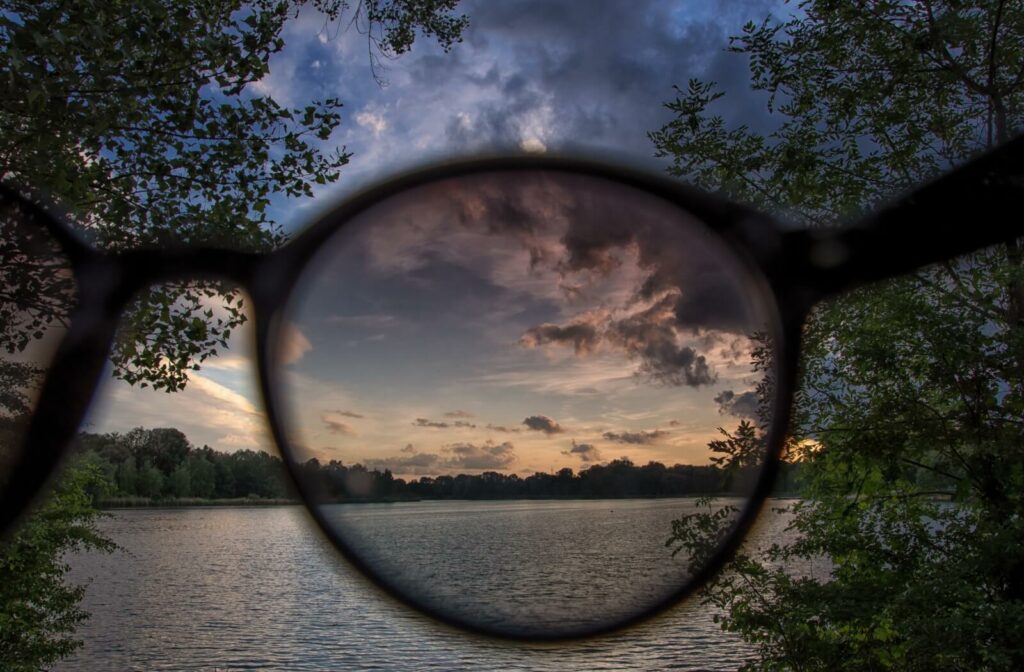You step outside on a bright day and immediately squint, even though you’re already wearing sunglasses. If that sounds familiar, your sunglasses might not be doing as much for your eyes as they should. Not all sunglasses are created equal, and if you’re not wearing polarized lenses, you might be battling glare without realizing it.
Polarized sunglasses reduce glare and improve clarity, but how can you tell if your sunglasses are polarized? A few simple tests—like tilting your head while looking at a reflective surface—can help you tell the difference. If the glare changes or disappears when you tilt your head, your lenses are likely polarized.
Understanding how polarized lenses work, how they compare to non-polarized lenses, and how to test for polarization can help you make informed choices when protecting your eyes outdoors.
Why UV Protection Matters
Before diving into polarized lenses, it’s important to understand what sunglasses are designed to protect your eyes from in the first place: UV radiation.
Types of UV Rays
- UVA rays: These rays pass through the Earth’s atmosphere and can cause premature aging and long-term damage to your eyes.
- UVB rays: These rays are partially filtered by the atmosphere, but still reach your eyes and can lead to serious conditions like cataracts.
- UVC rays: Thankfully, the ozone layer blocks these rays entirely, so unless you’re spending time in outer space, UVC isn’t a concern.
Exposure to UV rays can lead to:
- Corneal damage
- Cataracts
- Macular degeneration
- Growths on or near the eye (both benign and cancerous)
Even though regular sunglasses may darken your surroundings, that doesn’t mean they’re fully protecting your eyes. In fact, dark lenses without proper UV filtering can cause your pupils to dilate, exposing your eyes to even more UV rays.
What Are Non-Polarized Sunglasses?
Non-polarized sunglasses are simply tinted lenses that reduce the brightness of visible light. While such lenses may help you see more comfortably in sunny conditions, they don’t actively filter out glare from reflective surfaces like water, snow, or glass.
Why Some People Still Choose Non-Polarized Lenses
- They’re generally more affordable.
- They can provide clearer vision in low-light conditions, like early morning or dusk.
- They make it easier to detect icy patches, which can be helpful in snowy climates.
Still, if you spend a lot of time outdoors, and especially if you’re often exposed to reflective environments, non-polarized lenses may offer inferior visual comfort and protection.
What Are Polarized Sunglasses?
Polarized sunglasses are a step up in terms of both protection and performance. These lenses include a special chemical filter that blocks the intense light that’s reflected off of flat surfaces. The result is a dramatic reduction of glare.
How Polarized Lenses Work
The filter in polarized lenses only lets vertical light rays through, while blocking horizontal rays— like those that bounce off water, pavement, and snow. This reduces blinding glare and makes the world appear sharper and more vivid.
Benefits of Polarized Lenses
- Glare reduction: Perfect for sunny, reflective environments.
- Enhanced visual clarity: See more detail, especially on bright days.
- Improved comfort: Reduces eye strain and fatigue over time.
- Better depth perception and colour contrast: Helps you see the world as it truly is, not through a washed-out haze.
Whether you’re hiking, fishing, or driving, polarized sunglasses can make your experience more enjoyable—and safer.

How to Tell If Your Sunglasses Are Polarized
It’s not always obvious at first glance. Some sunglasses may claim to be polarized, but still might not offer the full benefits.
Easy Tests to Tell If Your Lenses Are Polarized
- The reflection test: Look at a reflective surface like the hood of a car or a body of water. Tilt your head side to side with your sunglasses on. If the glare intensifies and diminishes as you move, then your lenses are polarized.
- The screen test: Look at an LCD screen—like your phone, GPS, or computer—while wearing your sunglasses. Tilt your head. If the screen dims, changes color, or turns black, your lenses are polarized.
Still not sure? Bring your sunglasses to your local optometrist. They’ll be able to confirm the lens type and whether you’re getting the protection you need.
When to Wear Polarized Sunglasses
Polarized lenses are great for a variety of outdoor activities and environments. If you spend time in any of the situations below, polarized lenses can make a noticeable difference in comfort and visibility.
Ideal Situations for Polarized Lenses
- Driving: Reduces glare from the road, dashboards, and other cars—especially in wet conditions.
- Boating and fishing: Cuts through surface glare, allowing better visibility into the water.
- Hiking and skiing: Enhances contrast and depth perception in nature, whether you’re looking at rock formations or snow trails.
- Everyday errands: Walking downtown or enjoying a patio is just more comfortable with clearer vision and less glare.
When Not to Wear Polarized Sunglasses
While polarized lenses are versatile, there are some situations where they might not be ideal.
Situations to Avoid Polarized Lenses
- Snowy or icy roads: Polarized lenses may make it harder to see shiny ice patches, which could be dangerous while driving.
- Digital screen use: Some LCD screens can appear distorted or overly dark when viewed through polarized lenses.
- Operating equipment: Pilots, heavy equipment operators, or anyone working with instrument panels may need non-polarized lenses for accurate visibility.
If these scenarios apply to your daily life, having both polarized and non-polarized sunglasses might be a practical solution.
Are Polarized Sunglasses Worth It?
For most people, yes—especially those who spend a lot of time outside. The added glare protection and enhanced visual clarity are well worth the investment. Your eyes will feel less tired, your vision will be sharper, and you’ll be better protected from harmful UV rays.
Remember, not all polarized lenses are created equal. Cheap or knockoff sunglasses may offer little real protection. Always purchase your sunglasses from a trusted optical provider to ensure you’re getting quality lenses that support your eye health.
Protect Your Eyes in Alaska’s Unique Conditions
Alaska’s environment presents unique challenges for eye care. Long summer days, snowy landscapes, and reflective water can all increase glare and UV exposure. Whether you’re out fishing on the Kenai, driving through Anchorage, or hiking in Denali, your eyes deserve the best protection.
At Alaska Eye Care Centers, we offer a wide selection of polarized sunglasses that combine performance, style, and trusted UV protection. If you’re unsure whether your current lenses are doing their job, are ready to upgrade to polarized sunglasses, or just need to book an eye exam, we’re here to help.
Schedule an appointment today or stop by one of our locations today to explore our range of sunglasses and get recommendations from our friendly, knowledgeable team.



